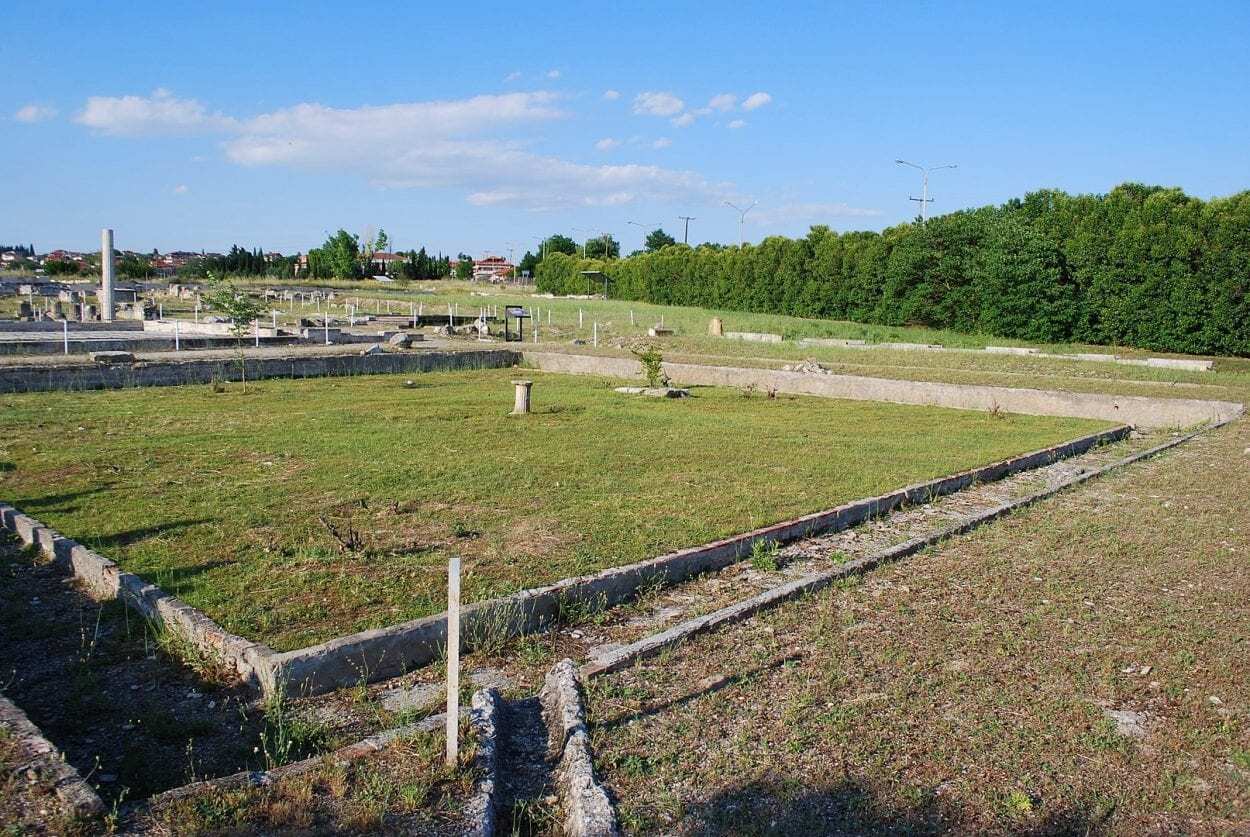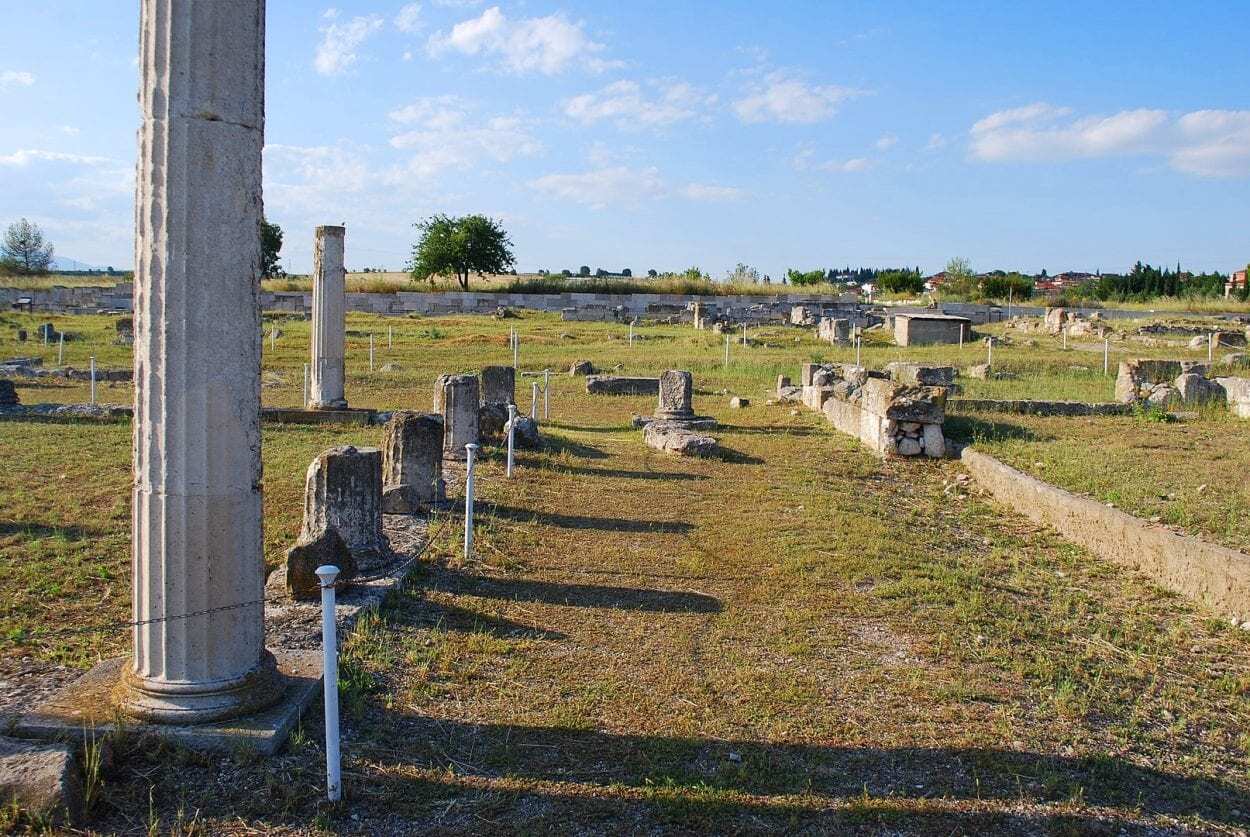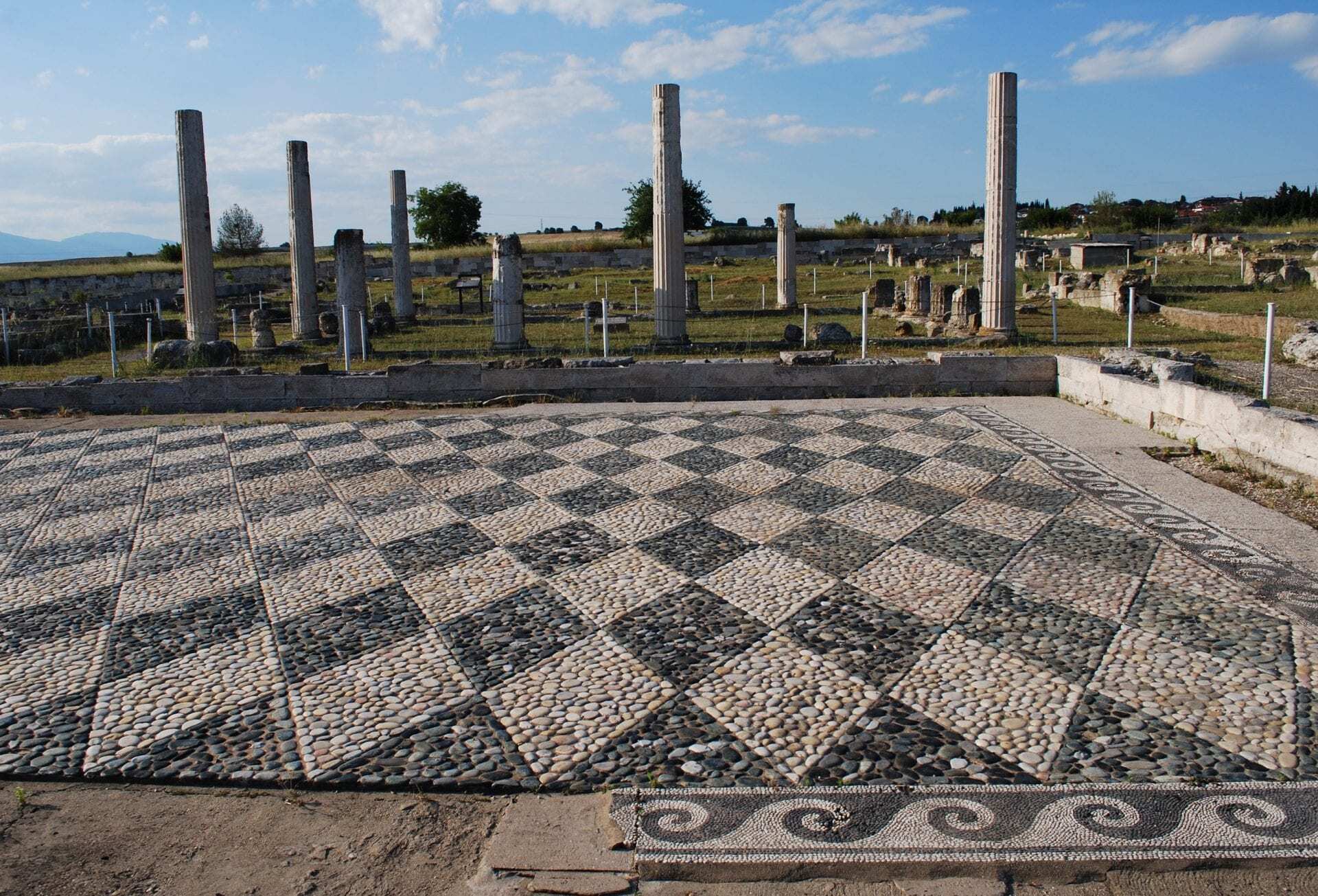Pella is an archaeological site and the historical capital of the ancient kingdom of Macedon.
Pella was founded next to the modern-day town of Pella, near the Macedonian Gulf in northern Greece. Most scholars believe that Pella was built as the capital for Archelaus I, who was King of Macedon from 413 to 399 BC, although some attribute Pella to Amyntas III, who ruled Macedon from 392 to 370 BC.
Pella is famed as the birthplace and ruling seat of Philip II and his son, Alexander III of Macedon, commonly known as Alexander the Great who succeeded Philip II to the throne at the age of 20. Although Alexander’s empire-building made Macedon a major power that stretched from Greece to northwestern India, it was Phillip II who consolidated most of Classical Greece and reformed the Macedonian army into an effective fighting force.

Pella became one of the largest cities in Macedonia and was designed to an early grid plan that consists of parallel streets, intersecting at right angles that form a grid of eight rows of rectangular blocks. In the centre was the agora, a public space that was the athletic, artistic, spiritual and political life in the city. Pella was also one of the earliest urban centres to have a piped water supply to individual households and waste-water disposal.
North of the city was the royal palace, a large complex (much of which is still unexcavated) that served as a royal household and an administrative centre for the kingdom.
In 168 BC, Pella was sacked by the Roman Republic, who later defeated Andriscus of Macedon, the last self-styled king of the ancient kingdom of Macedonia in 148 BC and established the new Roman province of Macedonia in 146 BC.

Pella was mostly destroyed around 90 BC by an earthquake, and a new distinct Roman town was established near the site of the old city. Although Pella was made a Roman Colonia around 45 BC, the area was used to settle displaced peasants whose lands were awarded to veterans of the legions.
By around 180 AD, Lucian of Samosata (an Assyrian satirist and rhetorician) passing through the town described it as “now insignificant, with very few inhabitants”. In the Byzantine period, the once capital of the Macedonian Empire was nothing more than a small fortified village and a forgotten memory until its rediscovery by 19th-century explorers.
Header Image Credit : CC BY-SA 4.0





